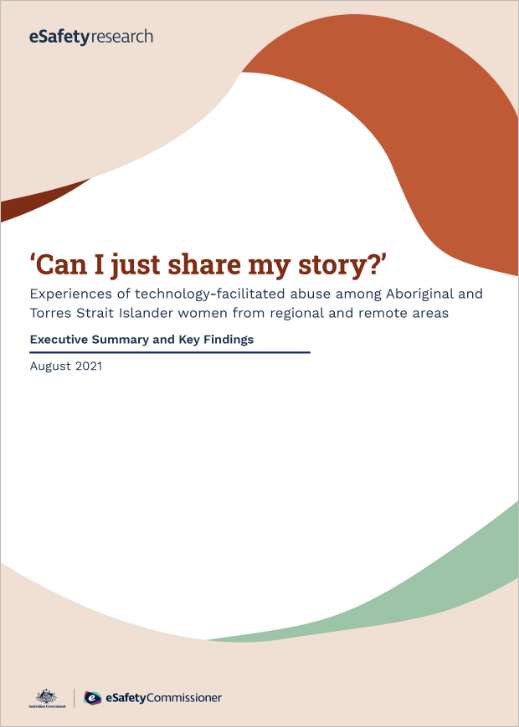Technology-facilitated abuse among Aboriginal and Torres Strait Islander women

Aboriginal and Torres Strait Islander adults are at increased risk of online hate and serious online harm. Aboriginal and Torres Strait Islander women also experience online harm and abuse using digital devices (like phones) as part of family violence, at much higher rates than the general population.
The findings are based on interviews with Aboriginal and Torres Strait Islander women and frontline support workers living in Central Australia, remote Western Australia and regional New South Wales.
There is a general lack of awareness about technology-facilitated abuse among Indigenous women living in these areas and their support workers. The report also reveals that abuse facilitated through technology has a serious and long-lasting impact on Aboriginal and Torres Strait Islander women.
Summary of key findings
Types of technology-facilitated abuse
- The abuse is most likely to be inflicted by a current or former male partner.
- Threats, harassment, monitoring, stalking and impersonation are the most common types of abuse.
Factors that increase the risk
- Low digital literacy and difficulty accessing services.
- Not knowing about technology-facilitated abuse and how to identify it.
- Close social networks that make it easier for the perpetrator to gather information and locate individual women.
Benefits of technology
- Online devices and phones are a lifeline to safety and the most direct way to access support.
- Technology is the most common and easy way to stay connected to family and friends.
Response and prevention required
- Education about technology-facilitated abuse, digital literacy and online safety for Indigenous women.
- Culturally appropriate and accessible services.
- Clear and consistent legislation explaining individual rights.
- Good relationships between the community, services and police.
Download the report
Other resources
This report builds on previous research, Online safety for Aboriginal and Torres Strait Islander women living in urban areas.

